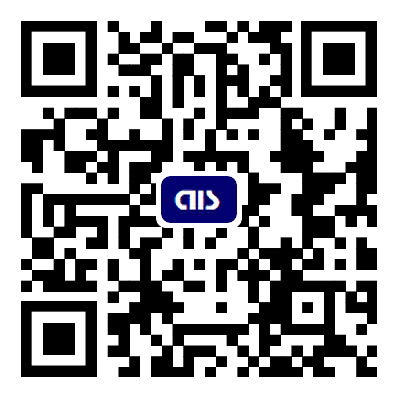REFERENCES
1. Amputee Coalition. 5.6 million++ Americans are living with limb loss and limb difference: new study published. Amputee Coalition (Washington, DC), February 14, 2024. Available from https://amputee-coalition.org/5-6-million-americans-living-with-limb-loss-limb-difference/ [accessed 10 October 2025].
2. Biddiss E, Chau T. The roles of predisposing characteristics, established need, and enabling resources on upper extremity prosthesis use and abandonment. Disabil Rehabil Assist Technol. 2007;2:71-84.
3. Bosman CE, van der Sluis CK, Geertzen JHB, Kerver N, Vrieling AH. User-relevant factors influencing the prosthesis use of persons with a transfemoral amputation or knee-disarticulation: a meta-synthesis of qualitative literature and focus group results. PLoS One. 2023;18:e0276874.
4. Van Der Riet D, Stopforth R, Bright G, et al. An overview and comparison of upper limb prosthetics. In: 2013 Africon; 2013 Sep 9-12; Pointe aux Piments, Mauritius. New York: IEEE; 2014. pp. 1-8.
5. Toro-Ossaba A, Tejada JC, Sanin-Villa D. Myoelectric control in rehabilitative and assistive soft exoskeletons: a comprehensive review of trends, challenges, and integration with soft robotic devices. Biomimetics. 2025;10:214.
6. Santosa KB, Oliver JD, Cederna PS, et al. Regenerative Peripheral Nerve Interfaces for prevention and management of neuromas. Clin Plast Surg. 2020; 47:311-21.
7. Dumont NA, Bentzinger CF, Sincennes MC, et al. Satellite cells and skeletal muscle regeneration. Compr Physiol. 2015;5:1027-59.
8. Chávez OHG, Castillo AG, Mariscal SC, et al. Quick review and technical approach for Regenerative Peripheral Nerve Interface surgery. MPS. 2023;13:126-31.
9. Vu PP, Irwin ZT, Bullard AJ, et al. Closed-loop continuous hand control via chronic recording of Regenerative Peripheral Nerve Interfaces. IEEE Trans Neural Syst Rehabil Eng. 2018;26:515-26.
10. Irwin ZT, Schroeder KE, Vu PP, et al. Chronic recording of hand prosthesis control signals via a Regenerative Peripheral Nerve Interface in a rhesus macaque. J Neural Eng. 2016;13:046007.
11. Kung TA, Langhals NB, Martin DC, Johnson PJ, Cederna PS, Urbanchek MG. Regenerative Peripheral Nerve Interface viability and signal transduction with an implanted electrode. Plast Reconstr Surg. 2014;133:1380-94.
12. Planitzer U, Steinke H, Meixensberger J, Bechmann I, Hammer N, Winkler D. Median nerve fascicular anatomy as a basis for distal neural prostheses. Ann Anat. 2014;196:144-9.
13. Murphy KA, Morrisonponce D. Anatomy, Shoulder and Upper Limb, Median Nerve. Nih.gov. Published January 12, 2020. Available from: https://www.ncbi.nlm.nih.gov/books/NBK448084/. [Last accessed on 12 Sep 2025].
14. Kim SP, Simeral JD, Hochberg LR, Donoghue JP, Black MJ. Neural control of computer cursor velocity by decoding motor cortical spiking activity in humans with tetraplegia. J Neural Eng. 2008;5:455-76.
15. Wu W, Gao Y, Bienenstock E, Donoghue JP, Black MJ. Bayesian population decoding of motor cortical activity using a Kalman filter. Neural Comput. 2006;18:80-118.
16. Kalman RE. A new approach to linear filtering and prediction problems. J Basic Eng. 1960;82:35-45.
17. Hardie R. A fast image super-resolution algorithm using an adaptive Wiener filter. IEEE Trans Image Process 2007;16:2953-64.
18. Jarrah YA, Grace AM, Samuel OW, et al. Enhancement of upper limb movement classification based on wiener filtering technique. In: 2020 IEEE International Conference on E-health Networking, Application & Services (HEALTHCOM); 2021 Mar 1-2; Shenzhen, China. New York: IEEE; 2021. pp. 1-6.
19. Avogaro A, Cunico F, Rosenhahn B, Setti F. Markerless human pose estimation for biomedical applications: a survey. Front Comput Sci. 2023;5:1153160.
20. Toshev A, Szegedy C. DeepPose: human pose estimation via deep neural networks. In: 2014 IEEE Conference on Computer Vision and Pattern Recognition; 2014 Jun 23-38; Columbus, OH, USA. New York: IEEE; 2014. pp. 1653-60.
21. Desmarais Y, Mottet D, Slangen P, Montesinos P. A review of 3D human pose estimation algorithms for markerless motion capture. Comput Vis Image Und. 2021;212:103275.
22. John GH, Langley P. Estimating continuous distributions in bayesian classifiers. arXiv. 2013;arXiv:13024964. Available from: [accessed 12 September 2025].
23. Navone HD, Cook D, Downs T, Chen D. Boosting Naive-Bayes classifiers to predict outcomes for hip prostheses. In: IJCNN’99. International Joint Conference on Neural Networks. Proceedings (Cat. No.99CH36339); 1999 Jul 10-16; Washington, DC, USA. New York: IEEE; 1999. pp. 3622-6.
24. Yang X, Tian YL. EigenJoints-based action recognition using Naïve-Bayes-Nearest-Neighbor. In: 2012 IEEE Computer Society Conference on Computer Vision and Pattern Recognition Workshops; 2012 Jun 16-21; Providence, RI, USA. New York: IEEE; 2012. pp. 14-9.
25. Galata A, Johnson N, Hogg D. Learning variable-length markov models of behavior. Comput Vis Image Und. 2001;81:398-413.
26. Oliver NM, Rosario B, Pentland A. A Bayesian computer vision system for modeling human interactions. IEEE Trans Pattern Anal Machine Intell. 2000;22:831-43.
27. Malešević N, Marković D, Kanitz G, Controzzi M, Cipriani C, Antfolk C. Decoding of individual finger movements from surface EMG signals using vector autoregressive hierarchical hidden Markov models (VARHHMM). In: 2017 International Conference on Rehabilitation Robotics (ICORR); 2017 Jul 17-20; London, UK. New York: IEEE;2017. pp. 1518-23.
28. Yamato J, Ohya J, Ishii K. Recognizing human action in time-sequential images using hidden Markov model. IEEE Xplore. 1992;92:379-85.
29. Yoon BJ. Hidden markov models and their applications in biological sequence analysis. Curr Genomics. 2009;10:402-15.
30. Avilés-arriaga H, Sucar-succar L, Mendoza-durán C, Pineda-cortés L. A comparison of dynamic naive bayesian classifiers and hidden. JART. 2011;9:81-102.
31. Liu J, Ying D, Rymer WZ. EMG burst presence probability: a joint time-frequency representation of muscle activity and its application to onset detection. J Biomech. 2015;48:1193-7.
32. Vaskov AK, Vu PP, North N, et al. Surgically implanted electrodes enable real-time finger and grasp pattern recognition for prosthetic hands. IEEE Trans Robot. 2022;38:2841-57.
33. Kuiken TA, Li G, Lock BA, et al. Targeted muscle reinnervation for real-time myoelectric control of multifunction artificial arms. JAMA. 2009;301:619-28.
34. Li G, Schultz AE, Kuiken TA. Quantifying pattern recognition-based myoelectric control of multifunctional transradial prostheses. IEEE Trans Neural Syst Rehabil Eng. 2010;18:185-92.
35. Cipriani C, Antfolk C, Controzzi M, et al. Online myoelectric control of a dexterous hand prosthesis by transradial amputees. IEEE Trans Neural Syst Rehabil Eng. 2011;19:260-70.
36. Lee C, Vaskov AK, Gonzalez MA, et al. Use of Regenerative Peripheral Nerve Interfaces and intramuscular electrodes to improve prosthetic grasp selection: a case study. J Neural Eng. 2022;19:066010.
37. Vu PP, Vaskov AK, Irwin ZT, et al. A Regenerative Peripheral Nerve Interface allows real-time control of an artificial hand in upper limb amputees. Sci Transl Med. 2020;12:eaay2857.
38. Garcia GP, Nitta K, Lavieri MS, et al. Using Kalman filtering to forecast disease trajectory for patients with normal tension glaucoma. Am J Ophthalmol. 2019;199:111-9.
39. Zhalechian M, Van Oyen MP, Lavieri MS, et al. Augmenting Kalman filter machine learning models with data from OCT to predict future visual field loss: an analysis using data from the african descent and glaucoma evaluation study and the diagnostic innovation in glaucoma study. Ophthalmol Sci. 2022;2:100097.
40. Foussier J, Teichmann D, Jia J, Misgeld B, Leonhardt S. An adaptive Kalman filter approach for cardiorespiratory signal extraction and fusion of non-contacting sensors. BMC Med Inform Decis Mak. 2014;14:37.
41. Li Z, O’Doherty JE, Lebedev MA, Nicolelis MA. Adaptive decoding for brain-machine interfaces through Bayesian parameter updates. Neural Comput. 2011;23:3162-204.









